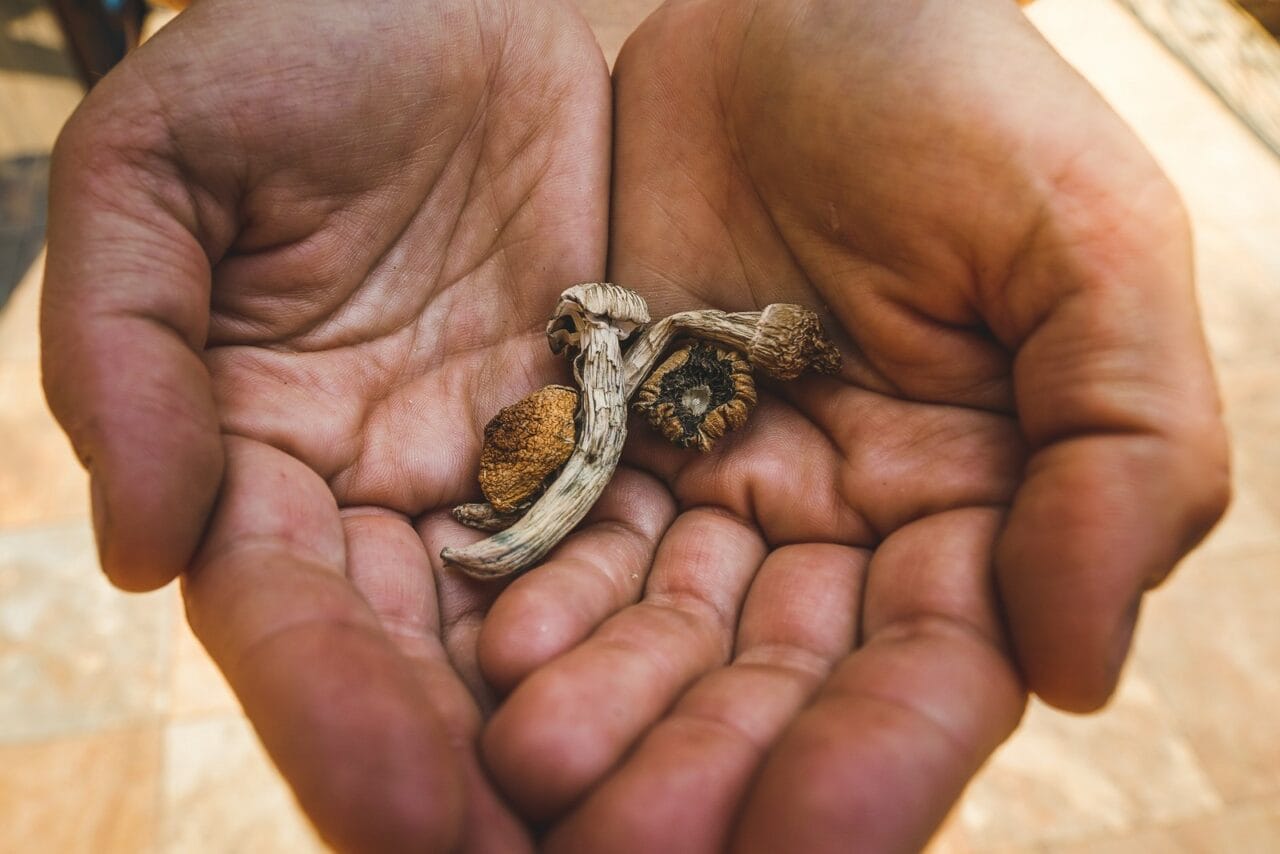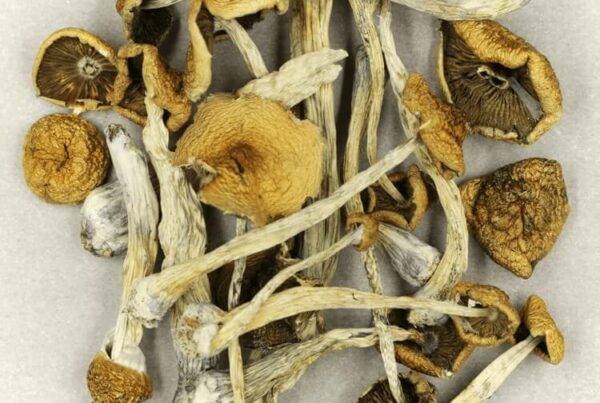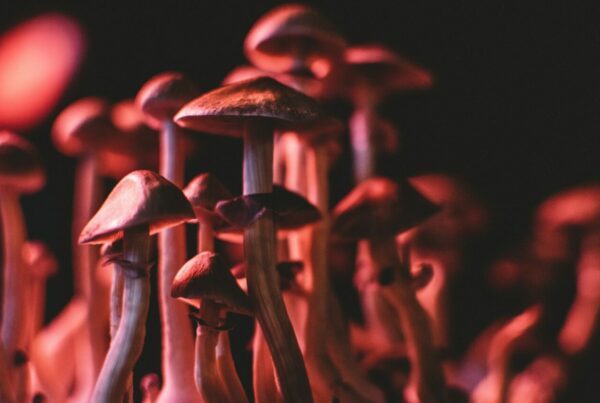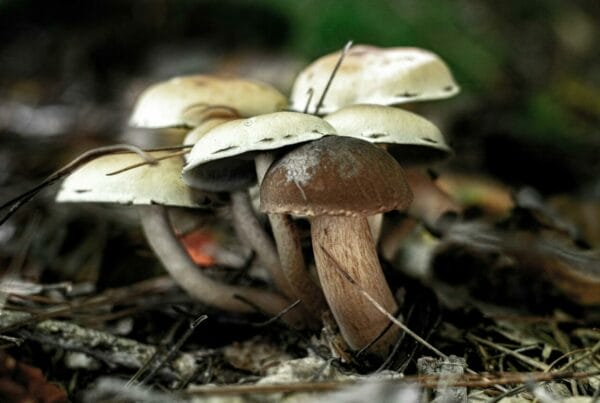Are you considering trying dried shrooms? These psychedelics are quite popular these days, but it can be daunting to decide whether they are the right fit for you.
Don’t worry if you’re a novice to psychedelics. We’re here to help you understand how dried mushrooms differ from other substances and why they could be an excellent choice for your initial foray into the world of psychedelics.
[toc]Key Points:
- Psilocybe’s active ingredient is the most studied psychedelic in mental health due to its safety, low addiction risk, and brief duration of effects.
- The most common form is dried Psilocybe, which retains its potency and has a longer shelf life.
- Psilocybin stimulates the serotonin 5-HT2A receptor, leading to heightened perception, vivid imagery, complex hallucinations, and time distortion.
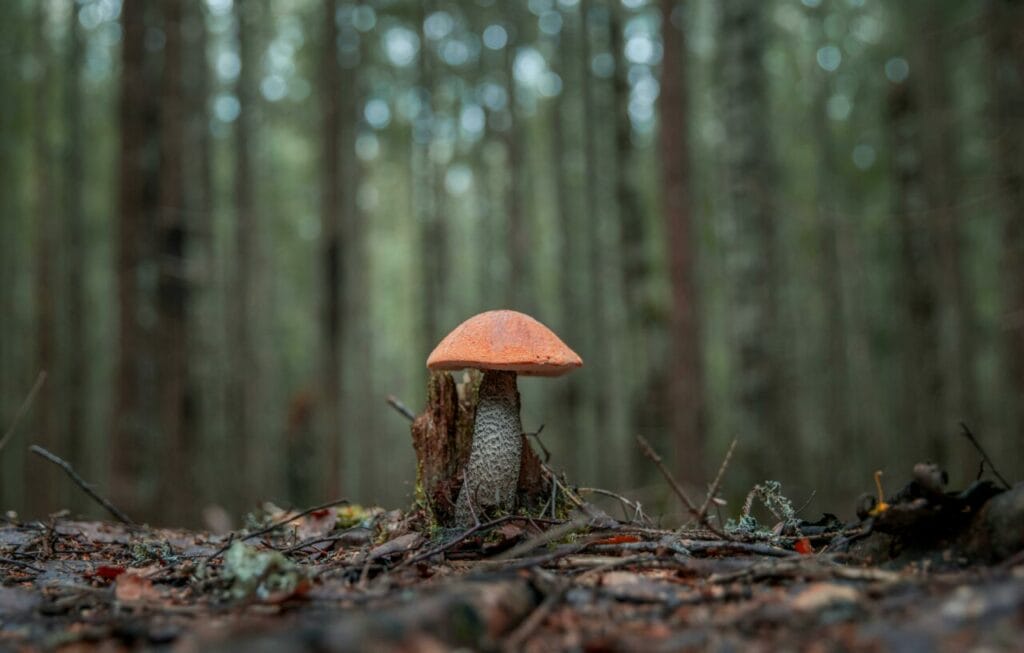
Psilocybin Mushrooms: Exploring the Psychedelic Fungi Realm
Psilocybin mushrooms contain the psychoactive substances, psilocybin and psilocin, which produce the hallucinogenic effects experienced by users. The most recognized species—Psilocybe cubensis—features a light brown cap, dark spots, and a distinctive shape. Several other species within the Psilocybe genus also produce these compounds.
Some toxic mushrooms mimic the appearance of Psilocybe and contain harmful toxins, which is why we strongly discourage mushroom picking.
Historically, various mushrooms played a key role in Central American spiritual practices. Today, their potential for treating mental health disorders, including substance abuse, is being explored by researchers.
Preparation and Preservation: The Dehydrated Form
Dehydrated Psilocybe is the most accessible form. Drying is essential to preserve their potency and extend their shelf life. Fresh mushrooms are usually dried using a food dehydrator or placed on a wire rack in a cool, dry area.
This process is critical to remove excess moisture and
Moisture can induce mould growth and degrade the active compounds in magic mushrooms. However, once dried, these mushrooms can be stored for future use.
Follow this step-by-step guide to properly dry and store magic mushrooms:
- Use an appropriate food dehydrator or a wire rack to thoroughly dry the mushrooms.
- For preserving their potency and protecting them from excessive moisture, store the mushrooms in airtight containers.
- To conserve their psychoactive properties, always store them in a cool, dry location.
- Prevent degradation by avoiding exposure to direct sunlight.
- Check regularly for mould or dark spots as these are signs of spoilage.
Comparing Psilocybe Cubensis with Other Psychedelics
In addition to dried mushroom products, there are other psychedelic products available online, all of which have varying effects on the body and are consumed in different manners. Some of these substances are categorized as classic hallucinogens, similar to psilocybin.
| Substance | Origin | Physical Effects | Research Findings | Duration |
| Psilocybin | Found naturally in over 200 mushroom species | Enhanced perception, hallucinations, altered time perception | Depression, Anxiety, PTSD, OCD, Cluster headaches, Alzheimer’s disease | 4-6 hours |
| DMT | Naturally present in plants like Psychotria viridis | Deep spiritual experiences, visions, auditory hallucinations | Depression, Addiction | 15-30 minutes |
| LSD | Synthetic, initially produced by Albert Hofmann in 1938 | Heightened emotions, altered perception, auditory and visual hallucinations | Depression, Anxiety, Addiction, Cluster headaches, Alzheimer’s disease, Tourette’s syndrome, ADHD | 8-12 hours |
| MDMA | Synthetic, first synthesized by Anton Köllisch in 1912 | Increased release of serotonin, dopamine, norepinephrine, and possibly oxytocin | PTSD, Autism spectrum disorder, Obesity, Narcolepsy, ADHD | 3-6 hours |
| Ketamine | Synthetic, first synthesized by Calvin L. Stevens in 1962 | Anesthetic properties, produces psychedelic effects at high subanesthetic doses | Depression, Bipolar disorder, Anxiety, Suicidal ideation, Addiction, Autism spectrum disorder, Chronic pain, Arthritis, Fibromyalgia | 1-3 hours |
How Does Your Body Respond to These Substances?
The workings of each substance are primarily theoretical, based on observed outcomes. These theories offer a glimpse into the possible ways these substances generate their effects, but they don’t deliver a concrete understanding of the involved underlying processes.
- Psilocybin: It effortlessly activates the serotonin 5-HT2A receptor, resulting in intensified perception, vibrant imagery, complex hallucinations, and distortions of time. It also initiates modifications in thalamic gating and increased activity in the prefrontal cortex.
- DMT: Its interaction with serotonin receptors forms only a portion of its overall impact, the full scope of which remains elusive. The serotonin receptor is undoubtedly important, but it doesn’t entirely account for all of DMT’s effects.
- LSD: It functions within the serotonergic system in the Dorsal Raphe, binding to the 5-HT2A receptor as a partial agonist and the 5-HT1A receptor as a full agonist.
- MDMA: It triggers an immediate feeling of happiness by enhancing the release of dopamine and serotonin.
- Ketamine: Its exact mode of operation remains unknown. Its antidepressant effect may be due to the inhibition of NMDA receptors on neurons. However, selective suppression of NMDA receptors on GABAergic interneurons and the downregulation of AMPA receptors may also contribute.
How Do Psychedelic Mushrooms Affect You?
The mental and physical reactions can vary dramatically based on dosage, environment, and the individual’s psychological state. Usual experiences associated with the consumption of psychedelic mushrooms include:
- Visual and Auditory Hallucinations: Users may observe patterns, colors, and shapes that don’t actually exist.
- Distorted Sense of Time: Time might seem to either lengthen or shorten.
- Altered Perception: Sensory experiences may be amplified or distorted.
- Emotional Fluctuations: A wide range of emotions, from happiness to anxiety.
- Spiritual Revelations: Experiences of a spiritual or mystical nature.
- Physical Effects: These may include an increased heart rate and blood pressure, or sensations of sickness.
Shrooms can be consumed safely when done so responsibly. However, inadequate preparation can result in unpleasant experiences for some individuals. While experienced users may find larger doses beneficial, newcomers who ingest substantial amounts may experience a “bad trip.”
Managing your experience with this substance can be straightforward. Choose a calm, quiet environment and have a sober “trip guide” on hand for support.
A Preferred Alternative to Other Substances
Healthcare professionals often lean towards dried shrooms due to their long shelf life and easy dosage. Its shorter duration and control over intensity make it an appropriate option for those new to psychedelic therapy. It’s also more organic than other synthetic hallucinogens, with DMT being the only exception.
Identifying the benefits of various compounds can be challenging as most clinical trials produce similar outcomes, particularly between LSD and psilocybin. The latter is the most extensively researched psychedelic for mental health concerns, mainly due to its impressive safety record, low potential for misuse, and brief perceptual trips.
Health Benefits
- This organic compound may help to relieve “cognitive rigidity,” reduce self-defeating thoughts, and promote self-compassion.
- A study in 2022 discovered that a single 25 mg dose lowered depression scores in individuals suffering from treatment-resistant depression. A 2023 study reported significant and enduring reductions in depressive symptoms with the combined use of regulated substances and psychotherapy.
- A 2022 clinical trial revealed that psilocybin-assisted psychotherapy significantly reduced the number of heavy drinking days over an eight-month period compared to a placebo.
- Research conducted in 2017 and published in the American Journal of Drug and Alcohol Abuse showed that two to three doses, along with cognitive behavioural therapy (CBT), enabled 10 out of 15 participants to quit smoking for a year.
- In a 2022 pilot study published in Biological Psychiatry, four out of five patients with anorexia reported improved symptoms of their eating disorder after a single dose of shrooms with psychotherapy. Additionally, two of them experienced a reduction in anxiety.
- Preparation Phase: In this stage, you will have one or several sessions, each lasting between 1-6 hours, with a facilitator. These sessions are meant to address your concerns, define your goals, and set clear expectations. They aim to build trust and ensure a safe environment.
- Dosing Phase: This phase lasts between 5-8 hours. During this period, you will be lying down, wearing an eye mask, and listening to a preselected playlist. A therapist will accompany you throughout the entire experience.
- Integration Phase: This phase includes post-session meetings designed to help you understand and process your experience. These sessions, spread over several meetings, last for a few hours each.
Is it more economical to buy shroom products compared to other compounds?
When compared to LSD products, dehydrated mushrooms are considerably more affordable. For example, you can buy 3.5 grams for roughly $20. Conversely, the cost of LSD in gel tabs varies depending on the dosage. For instance, six tabs with a strength of 100 micrograms each might cost approximately $90.

